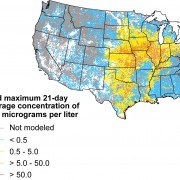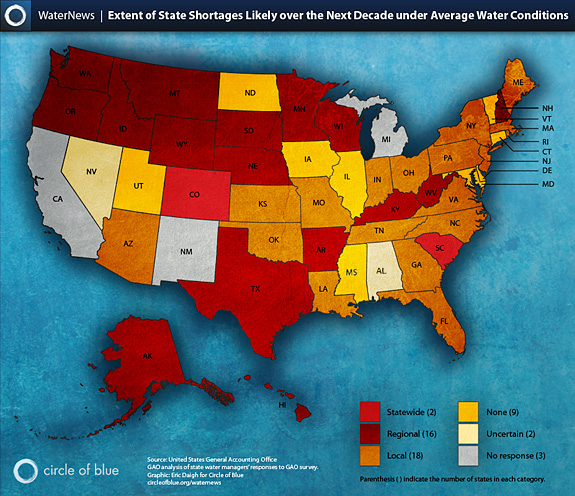Price of Corn and Soybeans Reached All-Time Highs in July, World Bank Says
The price of five internationally-traded staple crops rose 10 percent last month.
The combination punch of drought and scorching heat in some of the world’s major agricultural regions has pushed food prices on international markets to record highs, according to the World Bank.
In July, prices for corn and soybeans, which have been walloped by drought in the U.S. Midwest, rose by 25 percent and 17 percent respectively, both to all-time highs. The U.S. Department of Agriculture forecasts a decline in corn production of 13 percent from last year, and it rates more than half the crop in poor or very poor condition.
Wheat, by contrast, grew well in the U.S., but it has been hit hard by dry weather in Kazakhstan, Russia and Ukraine, where production is projected to be down 10 percent. As a result, wheat prices jumped by 25 percent in July.
The World Bank report says that, for various reasons, countries in Africa and the Middle East are the most vulnerable to these price shocks:
[These countries] have large food import bills, their food consumption is a large share of average household spending, and they have limited fiscal space and comparatively weaker protective mechanisms. Domestic food prices in these regions have also experienced sharp increases even before the global shock due to seasonal trends, poor past harvests, and conflict. Local circumstances will also largely determine how high domestic prices will be pushed from much higher international prices.
Meanwhile, the U.S. Department of Agriculture says that retail food prices in the U.S. will increase by 2.5 to 3.5 percent this year, a forecast that is unchanged from July.
The World Bank report–which tracks corn, soybeans, wheat, sugar and rice–is not the only price benchmark. The U.N. Food and Agriculture Organization’s food price index rose by 6 percent in July, and its cereals index rose by 17 percent.
The shape of things to come is still quite murky, the bank says. If a strong El Nino develops in the coming months, it could disrupt the wheat crop in Australia. Much also depends on policy decisions by exporting countries. Export bans or hoarding, which happened in 2008, would drive prices that much higher.
Brett writes about agriculture, energy, infrastructure, and the politics and economics of water in the United States. He also writes the Federal Water Tap, Circle of Blue’s weekly digest of U.S. government water news. He is the winner of two Society of Environmental Journalists reporting awards, one of the top honors in American environmental journalism: first place for explanatory reporting for a series on septic system pollution in the United States(2016) and third place for beat reporting in a small market (2014). He received the Sierra Club’s Distinguished Service Award in 2018. Brett lives in Seattle, where he hikes the mountains and bakes pies. Contact Brett Walton








Leave a Reply
Want to join the discussion?Feel free to contribute!